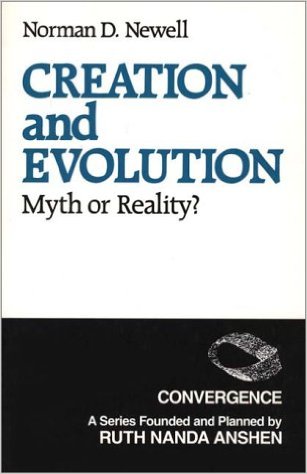
In search of inspiration for a blog post, I turned to the TalkOrigins Archive Quote Mine Project. From about 2003 to 2006, a band of volunteers took on the chore of investigating the source material from which creationists quarried misleading quotations from scientists. There I found a promising cul-de-sac to investigate for myself. Quote #22 in the project is given as follows: “‘All through the fossil record, groups—both large and small—abruptly appear and disappear. ... The earliest phase of rapid change usually is undiscovered, and must be inferred by comparison with its probable relatives.’ (Newell, N. D., Creation and Evolution: Myth or Reality, 1984, p. 10).” That’s the paleontologist Norman D. Newell (1909–2005), of course. Jon (Augray) Barber commented, “This isn’t on page 10. And the book doesn’t have an index. I guess it’s time to plow through the whole thing. ... And after reading the entire book, I can’t find it anywhere.” It turns out that it was premature of Barber to abandon hope of finding such a quote in Newell’s work, though. For in 1984, Newell wrote a pamphlet for the American Geological Institute, entitled “Why Scientists Believe in Evolution,” and quote #22 appears in it.
On page 10 of the pamphlet, there is a section headed “History of Life,” containing four paragraphs. The first paragraph disavows the view that evolution is progressive. The second paragraph begins:
Despite creationist claims, the entire biological world does not suddenly appear, complete, at the bottom of the fossil record. On the contrary, all through the fossil record groups—both large and small—abruptly appear and disappear. Gaps in the record, stressed by anti-evolutionists in support of special creation, are of several kinds. (emphasis added)
Here, of course, is the first of the sentences from quote #22, and it is quite clear why the creationist authors fail to quote what precedes it and what follows it! The third paragraph explains that because evolutionary changes tend to occur in small isolated populations, they are not likely to be captured in the fossil record, and the fourth paragraph continues the thought:
Generally, closely related groups are readily distinguished from each other throughout their history. They are better considered as stable, rather than steadily evolving branches. The earliest phase of rapid change usually is undiscovered, and must be inferred by comparison with its probable relatives. Continuous evolution (“gradualism”) is known in some fossil lineages, but most evolution seems to occur in times of splitting. (emphasis added)
And here, of course, is the second of the sentences from quote #22, and again it is quite clear why the creationist authors have not provided the full context.
I haven’t been able to identify the first creationist writer to use the Newell passage, so I don’t know how it was originally cited. But I (like Anne Elk) have a theory. I think that the first creationist writer correctly cited the American Geological Institute pamphlet, perhaps as “Newell 1984,” and that a later creationist writer, not having the full reference at hand, noticing that Newell’s Creation and Evolution: Myth or Reality? was published around the same time, assumed without checking that it was its source. (In fact, Newell’s book was published in 1982 by Columbia University Press and republished in 1985 by Praeger, but 1984 is often given as the publication year for the Praeger reprint, even by mainstream sources, possibly because it was released in late 1984 with a 1985 copyright date.) Corroborating my theory (which is mine and belongs to me) is the apparent fact that no creationist writer who misattributes the passage to Creation and Evolution gives 1982 or 1985, or indeed any date but 1984, as the publication year. Of course, none of them looked at the book: if they had, they would have found on p. 10 a discussion of the Scopes trial and its aftermath rather than a discussion of the fossil record.
Creation and Evolution’s discussion of the fossil record amply confirms that it would be a mistake to understand Newell as supporting creationism or even as acknowledging any merit to a creationist interpretation of the fossil record. Chapter 14 is on “The Origin of Species,” and in a section on “Fossil Gaps and Macroevolution,” Newell, as in the pamphlet, disavows the view that evolution is progressive, insists that “gaps” in the fossil record are not problems but have a variety of explanations, and observes that evolutionary innovations are likely to occur in small isolated populations and therefore less likely to be captured in the fossil record. He is able, though, to offer further details about punctuated equilibrium in the next section of the chapter, culminating in, “This de-emphasis on gradualism and natural selection in the origin of species has gladdened the hearts of creationists, who seem to feel that in some way evolution is being dismantled and left without a mechanism. Quite the contrary! The abrupt and jerky origins of new species, called ‘punctuated equilibria,’ refute the basic premise of creationism—that all the species that ever lived came into being more or less simultaneously” (emphasis in original).

